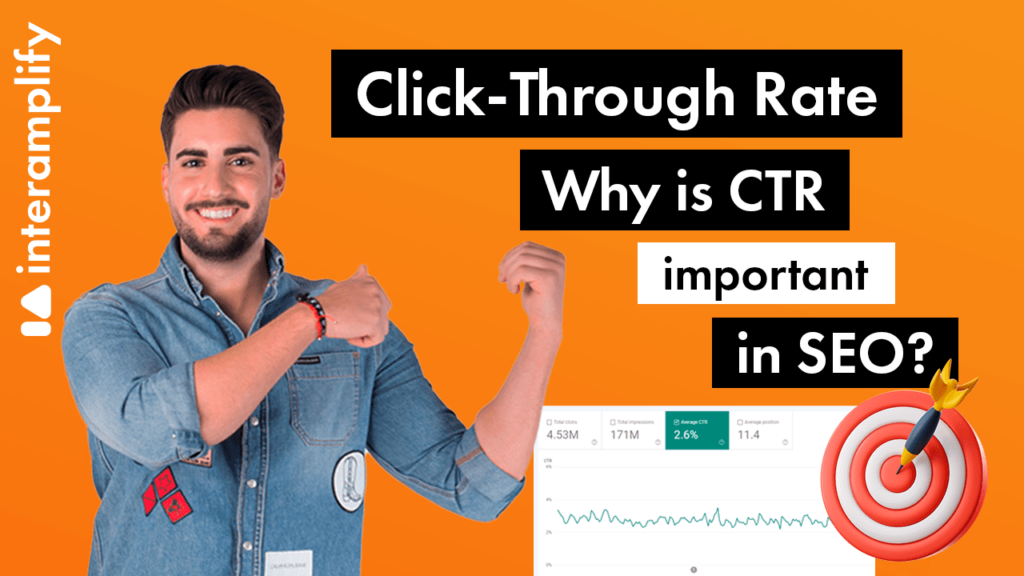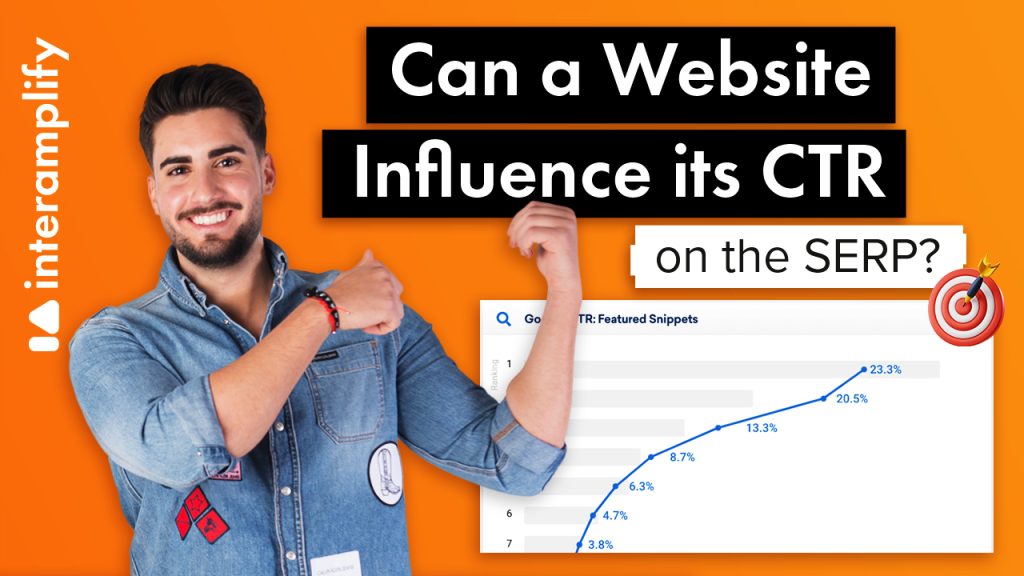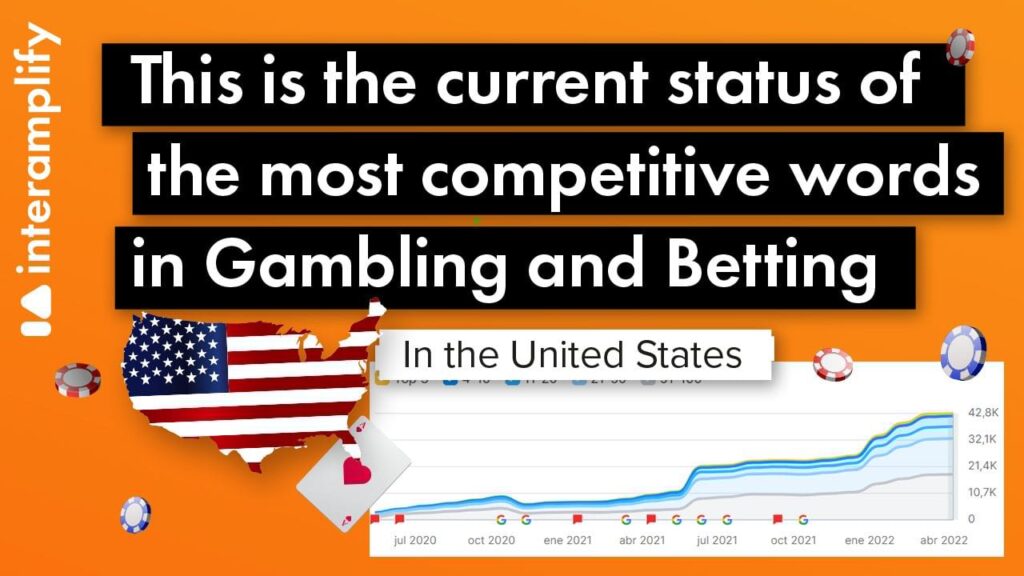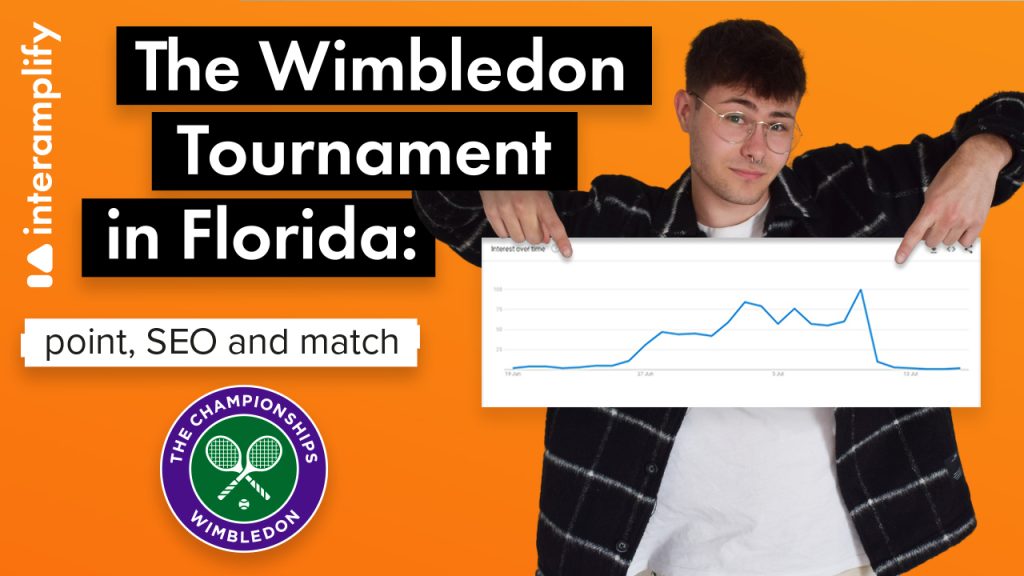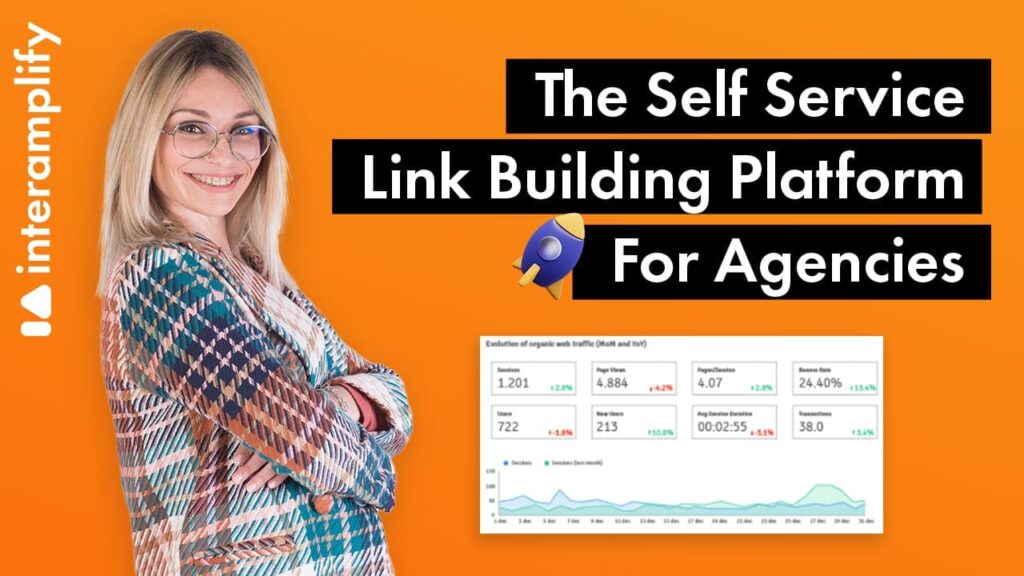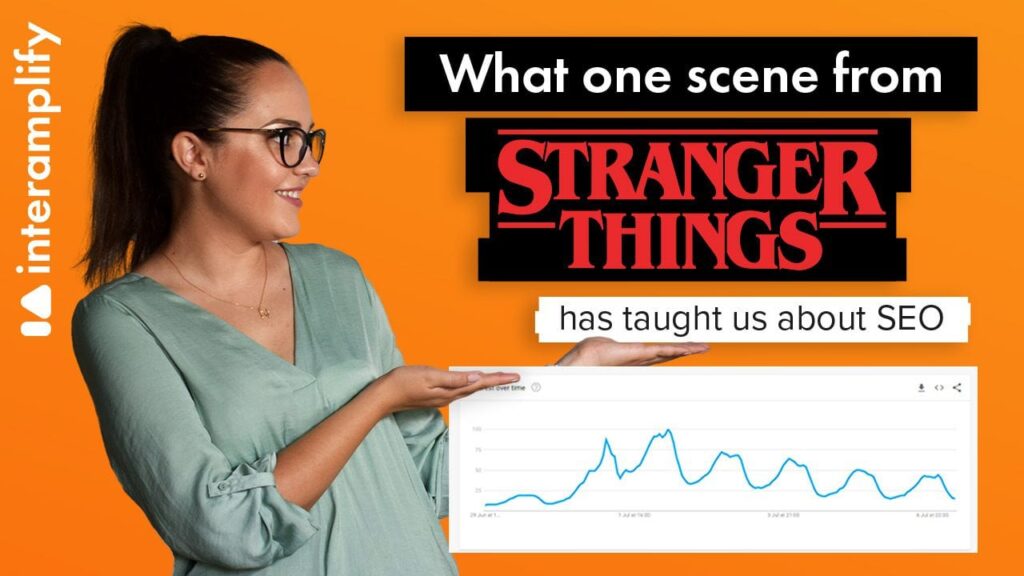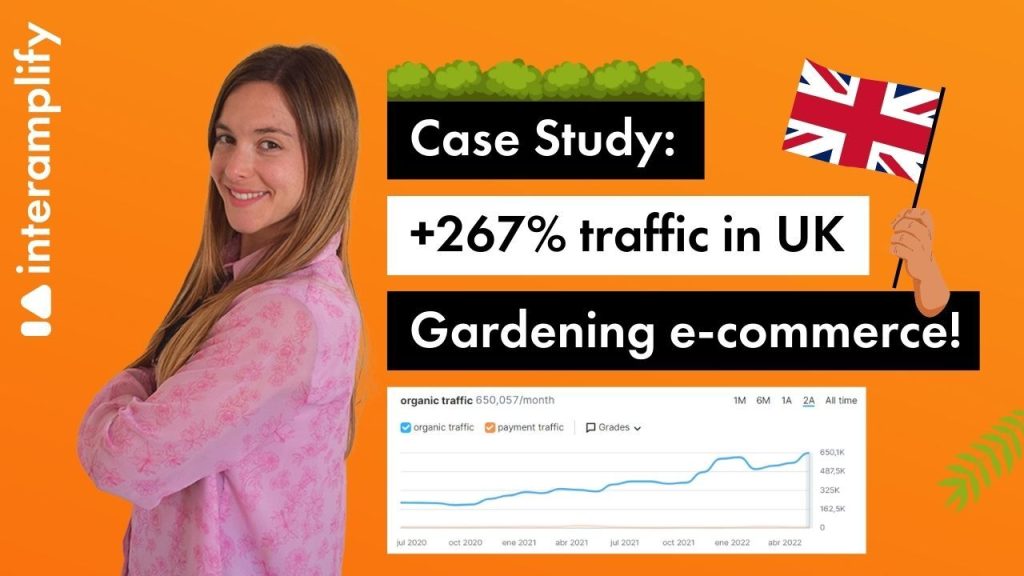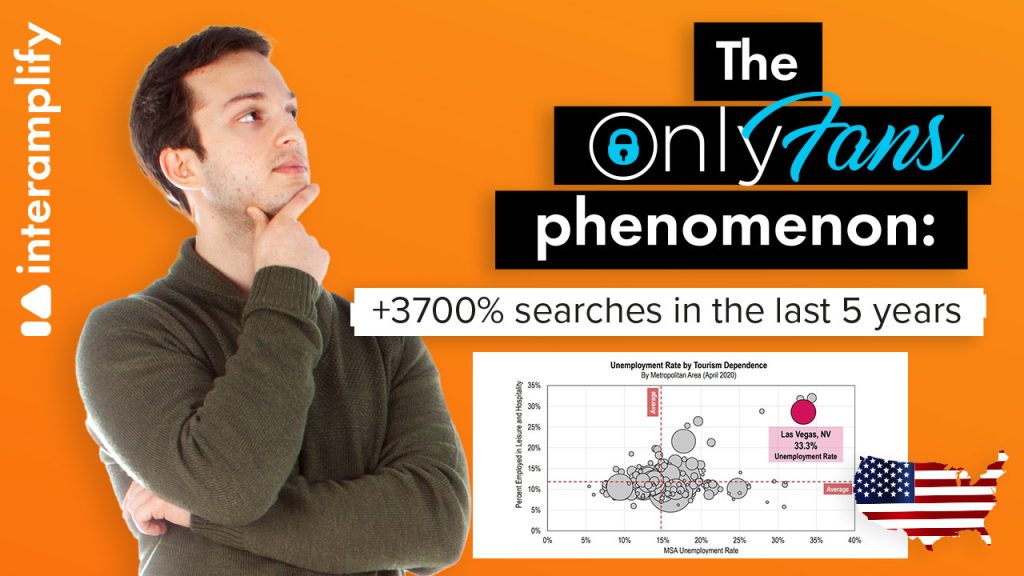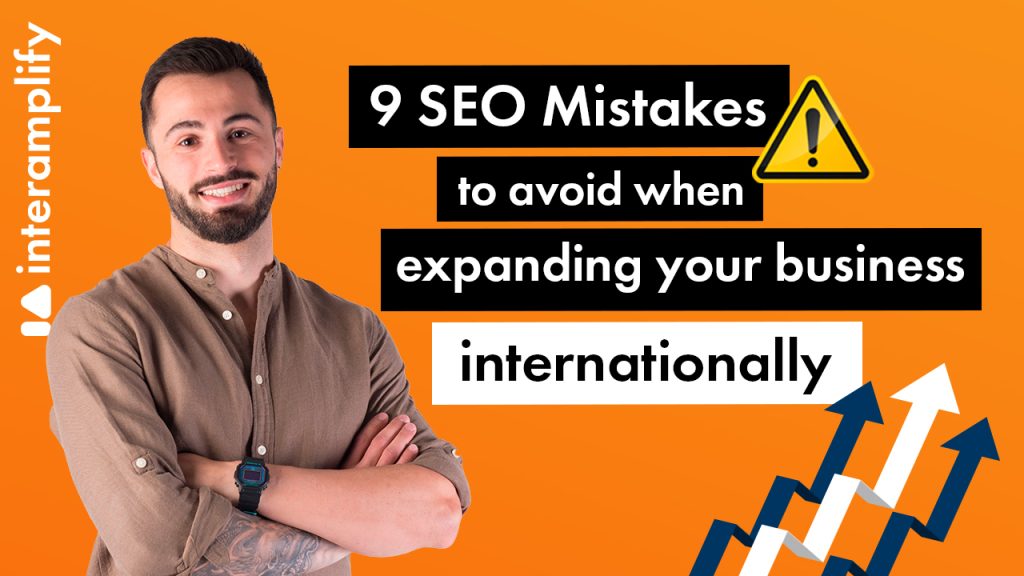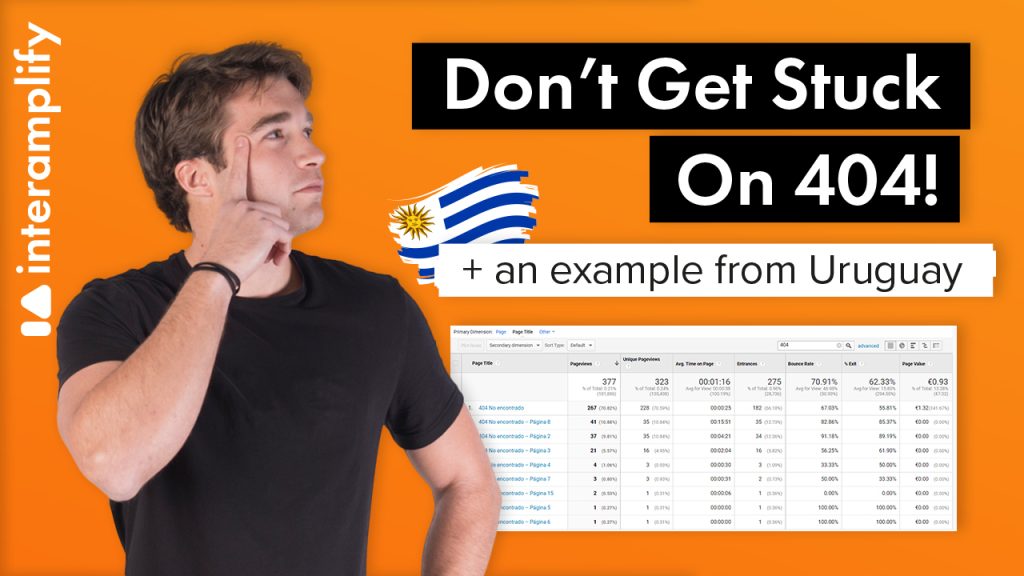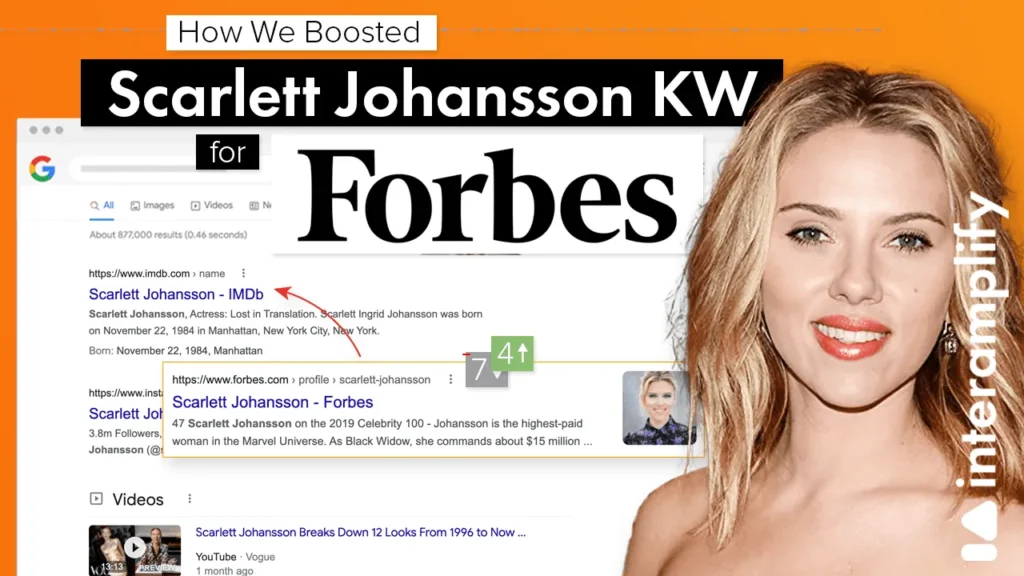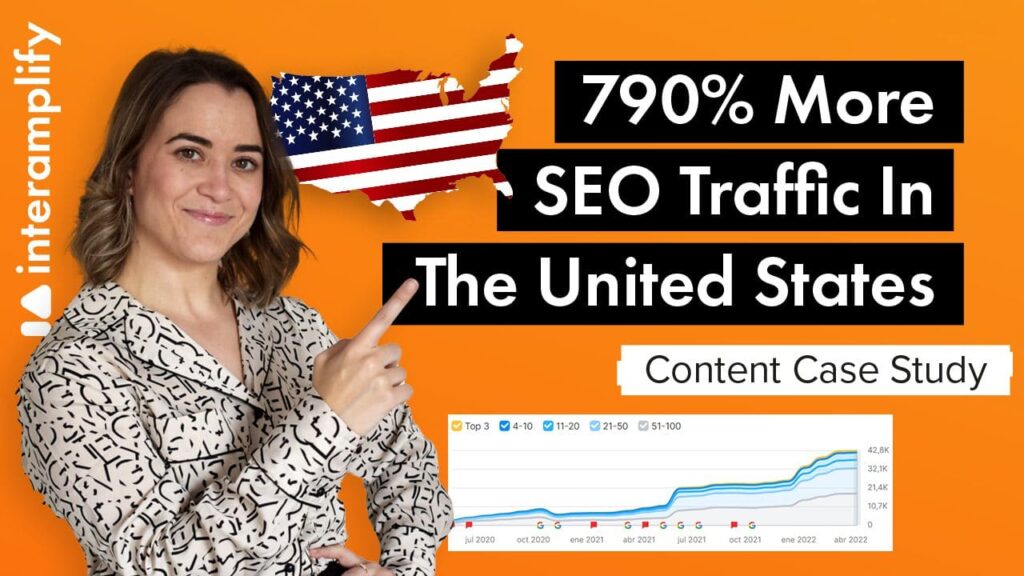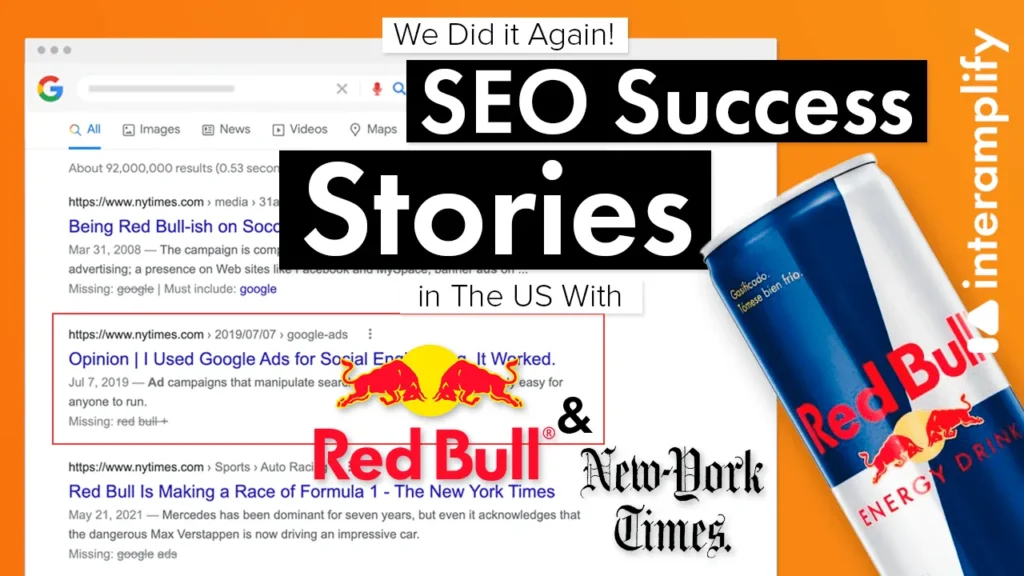Everything starts with a click. Have you ever thought about what happens next, after visitors arrive at a website? Even though the Google search landscape is rapidly changing right now, click rate (CTR) has a significant impact on the outcome of your work as it indicates how many people clicked on each position as a percentage of all clicks.
It is especially critical for SEOs to understand how the CTR of Google search results can be influenced and understanding how users engage with SERPs. Many SEOs’ jobs entail ranking content on Google’s first page. But, what is the point of a first-page result if no one clicks on it?
Many business owners wonder, “How much traffic would I get if I ranked first for my target keywords on Google?” Claiming the top position in the SERP (Search Engine Results Page) drives up your SEO click-through rate CTR like nothing else!
Why do we need to worry about Google CTR?
A fundamental task in search engine optimization is to direct the greatest number of relevant visitors from Google to your website. It is well known that the user loses interest on the second page of results, but few are aware of the differences between the ten organic positions in SEO CTR.
Google’s CTR calculation is based on computer users’ click behavior, but it is true that this trend has been decreasing recently due to searches on mobile devices, where the SERPS are more concentrated to be optimized by Google’s engine.
Technological advancements have altered the web search landscape, presenting a future full of possibilities thanks to Google’s new integrations, which combine the best automation technologies to assist you in improving your results across all channels.
Differences between CTR within the first ten organic results
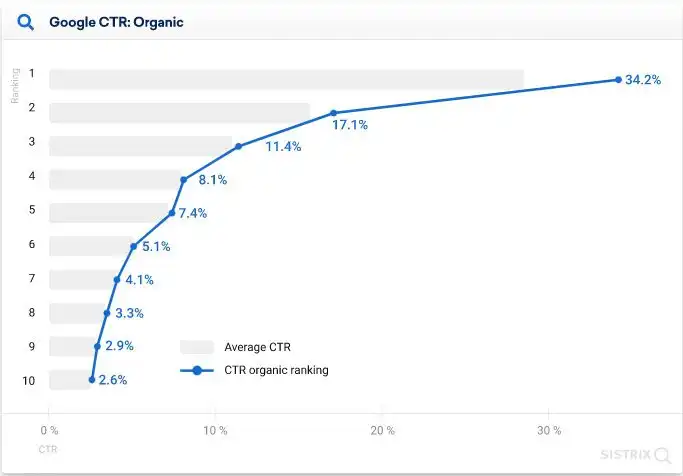
According to recent studies, the click-through rate for first place on Google is 34,2%. The following searches are significantly lower, with a 17.1 % click-through rate in second place. As a result, there is a 31.6 percent difference in user interest between the first and tenth positions, with a 2.6 % click-through rate.
We can highlight that searches showing links to other websites have a higher CTR than organic SERPs. Customer click-through rates on commercial websites using Google Shopping Ads and Google Ads are significantly lower.
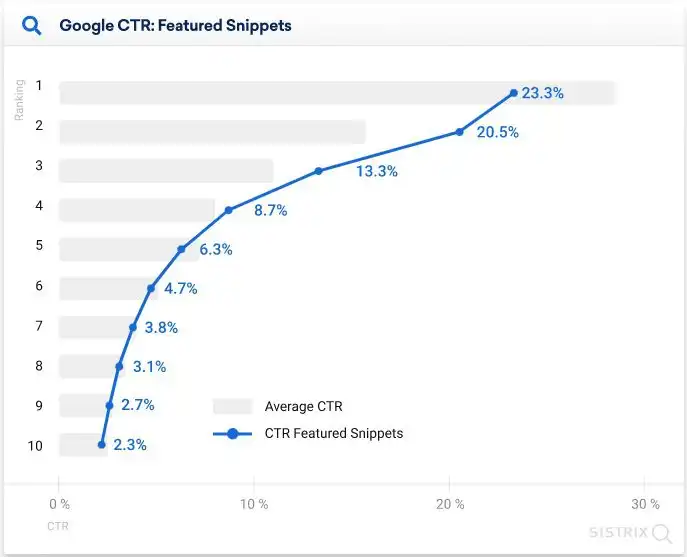
Components Influencing Google Search ConsoleClick-Through Rate
The design of the SERP features is one of the most important factors influencing the expected CTR of Google results. Actual click-through rates vary greatly depending on the industry and keywords used.
Search Engine Result Page, better known by its acronym SERP, refers to the results that appear on search engine pages. SEO and digital marketing professionals compete for the best SERP position. SERPs are classified into two types:
- Organic: Organic search results based on the internal algorithms of the search engine.
- Paid: Results provided by paid pages for specific searches.
When searching in Google, there are a number of integrations that are updated on a regular basis. The elements that influence the SERP are as follows.
- Search box: where we write the terms we want to search for.
- Result information: Number of pages that are obtained with a result.
- Vertical navigation: This refers to the tabs that appear below the results and allow the user to filter based on their preferences.
- Ads: They typically appear at the top of search results because the company has paid for the content, are identified by an ad reference, and allow us to extract keywords.
- Organic results: are the most important for SERP, due to their relevance.
- Knowledge graphs: These are displayed to the right of the search results and provide structured results with images, music, links, and so on.
- Local results: Searches that display the nearest results, complete with addresses and ratings on Google Maps.
- Searches and related questions: These help to reduce loading times and increase visibility.
- Rich and Featured snippet: Content that provides extra information.
How to boost CTR optimization with Sitelinks
Sitelinks are displayed beneath the first search result returned by Google search engine. They are internal links to the page with a brief description that help the user navigate the website more easily. Sitelinks are extremely important for our website and its users.
- Increase click-through rates by directing customers to relevant pages that lead directly to the product or service.
- Google’s algorithm only displays sitelinks with high trust and credibility
- Sitelinks highlight key pages about your company, allowing users to learn about what your company has to offer without visiting your website.
Unfortunately, you can´t set your site links because they are determined by Google’s algorithms, but you can follow a few guidelines to position yourself as favorably as possible, with the best guarantees.
- Have an original web name that has not been used before.
- Contain a clear navigational web structure and data that is schematically organized.
- Internal links on your website can help you raise your ranking position in Google.
- Use appropriate, relevant page titles, title tags and meta descriptions.
- Build your brand reputation with high-quality content to attract users.
Serps with Featured Snippets
The main disadvantage of Rich Snippets is that they can result in your website having a lower click through rate. In the case of featured snippets, this is primarily due to the fact that the fragment or explanation of your article that Google displays at the top of the first search page clarifies the question so concisely that the user avoids having to visit your page.
Snippets, on the other hand, allow us to differentiate ourselves from our competitors, as the second and third pages with the highest click-through rates are both above average when the first result returns a snippet highlighted by site links.
Knowledge Panels have a negative impact?
Knowledge Panels are commonly found in the page’s right panel. They are highlighted results that include information about the relevant keywords that were searched for. Although similar to Featured Snippet, the Snippet has a different format and contains a link to the website.
These SERPS distinguish themselves by providing more detailed information in a more structured format. They usually do not include external links, but do include search links within Google, so they receive fewer clicks because they get the answers they need directly from the Knowledge panel.
Because of their position within Google and visual characteristics, Knowledge Panels will reduce the CTR of organic results ranked for the keyword that appears in the search. Knowledge Panels can be a significant disadvantage if your company is focused on attracting traffic through content and advertisements.
Relationship between CTR and Serps with Google Ads
Google Ads are the traditional advertisements that appear when we search on Google.
It is difficult to determine an appropriate percentage that will yield the best results, but many agree that a CTR of less than 2% indicates that our campaign is not performing well.
One reason it may not work is when the top of the SERP is full of ads (banners, text, video…), which contribute to a drop in clicks, negatively affecting the results, and to a lesser extent the organic ones, in our business.
Why is it critical for businesses to track the return on their marketing investments?
It is critical to understand the return on marketing investment. ROI is the most commonly used metric. The Return on Investment tells us whether the campaign we have carried out has had a positive or negative return for our company. It also allows us to forecast future planning because the results allow us to determine which campaigns were successful and which were not in order to improve or eliminate them.
What is ROI and why is it so meaningful?
ROI is a metric used by businesses to determine the return on investment. Tracking the return on investment allows us to determine whether our investment has resulted in losses or profits and, as a result, set specific sales targets.
How do you calculate ROI?
A percentage-based rule can be used to calculate the return on investment. We will learn the following from this formula:
- Profitability of a business area.
- The campaign’s ROI.
- Benefit of a specific action.
- Return on investment for the entire organization.
We will use the following metric:
ROI = Net Income / Cost of Investment
Increase ROI and improve Marketing Performance
Continuous measurement of results is the key to increasing the return on investment in digital marketing. In order for our campaign to be successful, we must understand a number of factors that influence ROI calculation.
- Leads: Campaigns that ask the google users to perform a specific action, such as filling out a form.
- Branding: Campaigns to maintain and increase the website’s notoriety among users.
- Economic: These are the most basic, focusing on product sales.
- KPI´s: Metrics that let us know if the goals we set for ourselves are being met.
- Revenue: It is essential to understand the monetary value generated by each campaign.
- Budget: We can divide it into three categories: material, human and investment expenditure.
Mobile vs. Desktop CTR SEO
The development of progressively, intelligent mobile devices with an increasing number of tools to aid in their use has altered the landscape of web searches, which has grown exponentially when compared to desktop and laptop searches. Mobile traffic characterizes many of the keywords. As a result, there are noticeable differences in user click-through rates from their phones.
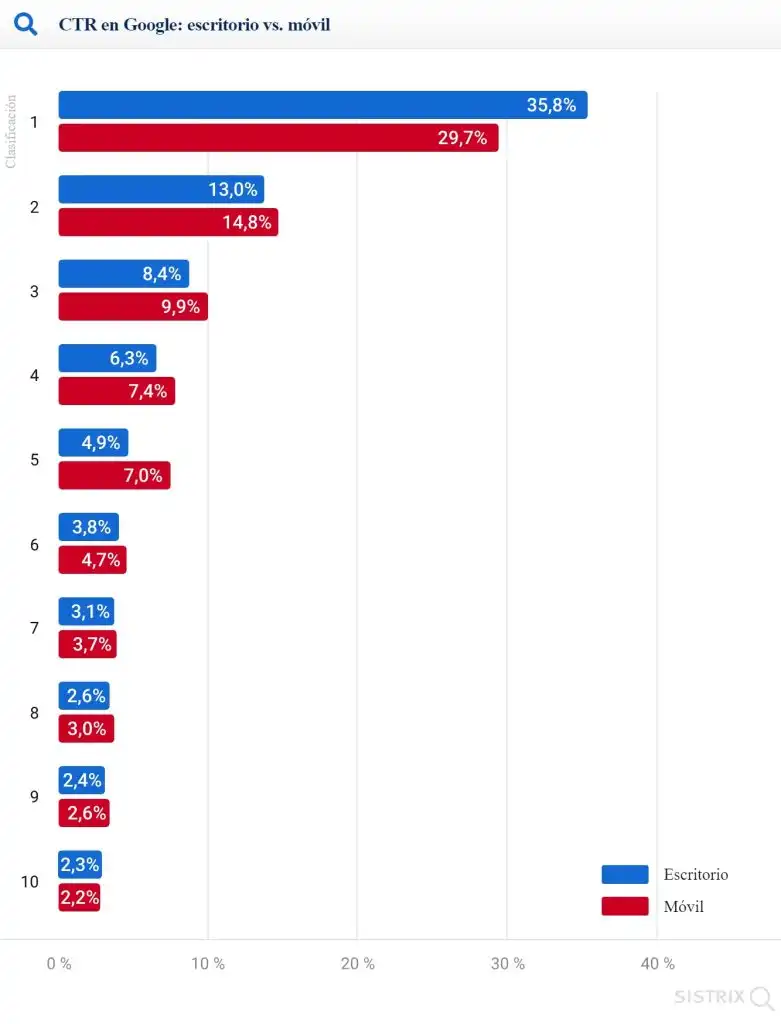
In both cases, the behavior is distinct. Computer users are more likely to click on the first organic results, whereas smartphone users prefer results further down the web page. Scrolling down is more common among smartphone users. Another factor is the effort required to start a new search on different devices, with computer users more likely than mobile users to use the phone’s keyboard to begin a new search.
CTR by Country vs Expected Traffic
The Click through rate varies depending on the country or countries you are targeting. In the United States, Japan or Indian computer-based search traffic predominates. In Europe, the United Kingdom and Italy stand out, but the overall trend in most countries is negative. The proportion of mobile click share is on an upward trend and is even consolidating in some countries such as Germany and France. It is worth noting the increase in traffic during peak seasons, with a spike in searches around Christmas and key dates.
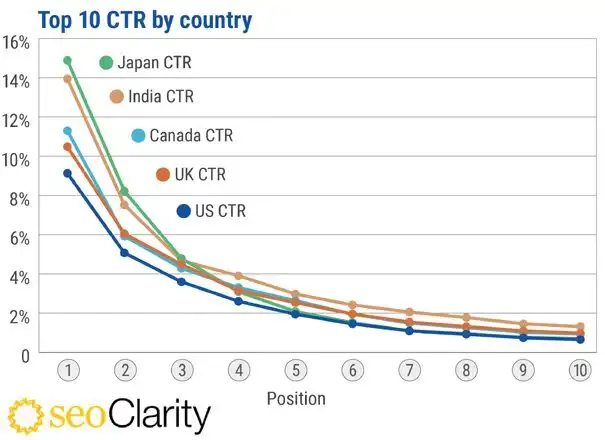
The ability to correctly forecast Impact on CTR at a Seasonal level
The industry’s seasonality has a direct impact on our projections and results. Many of these characteristics are influenced by the time of the year. The factors that increase the proportion of click through are usually important dates with more visits resulting in more purchases. Christmas, summer vacations, Father’s Day, Mother’s Day, and Valentine’s Day all have an impact on our company’s profits. Knowing the seasonality of the product we want to sell will assist us in reducing the negative effects.
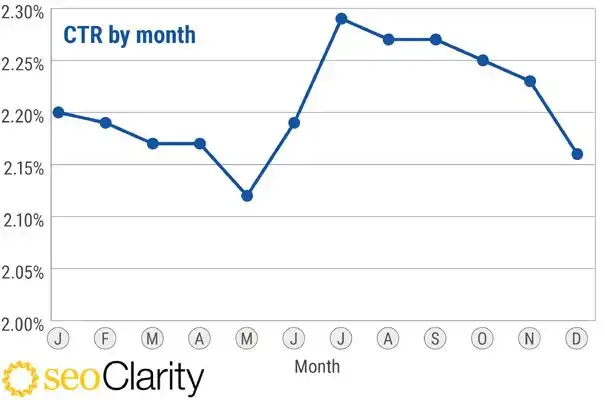
CTR variations by Industry
The search behavior of users is affected by the industry in which you operate. Click-through rates vary greatly across industry sectors and topics. While weather forecast and recipe searches are the most popular on Google rankings, there are some sectors that perform below average, such as job postings, telecommunications, and B2B sales.
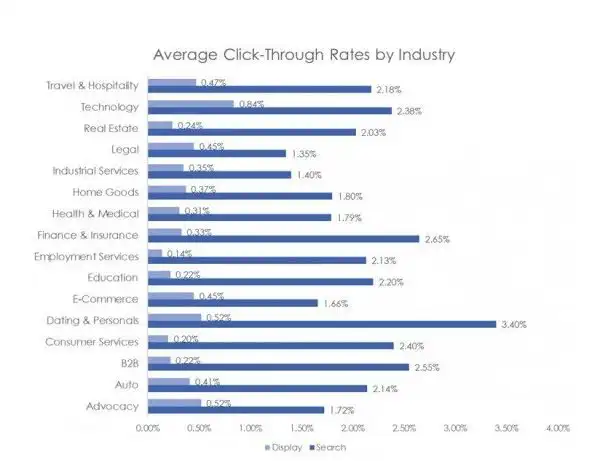
Faq´s about CTR in SEO
Which formula allows you to anticipate and predict campaign success?
The best way to anticipate and predict the success of your campaign is to calculate the so-called ROI (Return on Investment) using the formula: ROI = Net Income / Cost of Investment
What are the advantages and disadvantages of ROI?
ROI enables us to determine whether our investments have resulted in losses or profits, allowing us to implement the best business strategies.
What is the purpose of a click through?
The primary goal of CTRs is to direct as many relevant visitors as possible from Google to your website.
Which factors affect click-through rate?
Some of the factors that influence click-through rates are related to the SERP, which refers to the search engine results pages.
What is generally considered a good CTR for Google search?
Give yourself a slap on the shoulder if your click through rate for Google search is around 2% or higher. That is generally regarded as a good CTR. However, it may still be considered low in your industry. Click through rates in some industries are higher than in others.
What is an above-average ctr?
When it is higher than the average click through rate of the general search results page, it is considered good for Google search. As previously mentioned, it must comply with a number of elements that influence the SERP.
Which Google position should receive highest CTR?
In terms of organic CTR, the highest click through rate should be in the top three Google positions.

